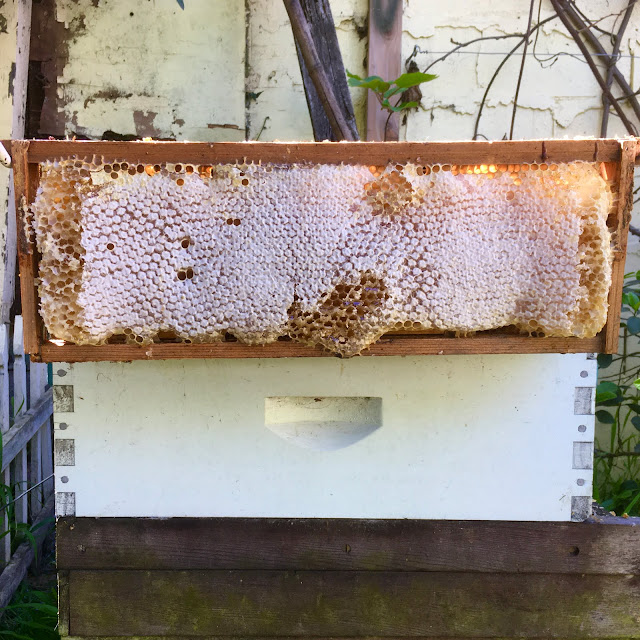Oh Honey...
As the citizens California enter another week of coronavirus lockdown, and we unexpectedly find ourselves with more time than we're used to, I suspect we're all tackling neglected or time-consuming projects.
In my case, I'm dealing with some beekeeping tasks.
Over the winter, my colony of honeybees slowly dwindled to nothing. It was painful, watching the colony falter, but I didn't feel there was much I could do. It's not wise to open up a beehive in cold rainy weather. The disruption and chilling is too damaging.
Over the last week, I've been harvesting the honey and wax that the bees left behind. I want to remove the honey from the hive before the ants discover it. The legs of our hive-stand sit in water-filled cat food cans, as a sort of ant moat. But of course, if even a single blade grass touches the hive, the ants can use it as a highway. California is over-run with Argentine ants, which are an absolute scourge.
I don't own a fancy honey extractor, so we practice a decidedly low-tech (and slow) method of honey harvesting, called crush-and-strain. We cut the honeycomb out of the wooden frames, cut open the comb, and let it strain through a double layered sieve. We have a gas oven with a pilot light, so we do this operation in the oven. The mild heat of the pilot light warms the honey just enough to let it flow more freely. Despite this, it's a time-consuming process.

But hey, we've got nothing but time at the moment.
The honey drips into a ceramic bowl, and then we strain it through an even finer sieve. This strainer is made of fine food-grade plastic and I'm not sure it would withstand hours in the oven.
Once the honey has drained out of the wax, we heat and filter the wax. This time, we used layers of medical-grade cheesecloth, suspended over a vessel of water. We put this in the a very cool oven. Beeswax melts at 144 -147°Fahrenheit/62 - 64°Centigrade, which is easy to maintain in our 1940s gas oven.
What we shouldn't have done is used such long cheesecloth. The wax wicked into the fabric and pooled on the plate we'd set under the metal pitcher. I knew the fabric would become saturated (and planned to use it as fuel in our bee-smokers) but a plateful of melted wax was not something I'd anticipated. I poured this molten wax into a bowl of water, which resulted in this fascinating shape.
The molten wax floats atop the water in the pitcher, and when it cools it forms a lovely cake. I may re-filter this wax, because I see some impurities in the wax.
Isn't this splendid? This is exactly the sort of endeavor that I often don't make time for.

Even more splendid is the fact that we now have a supply of fresh (and ultra-local) honey. I gave the next-door neighbors a slab of honey in the comb yesterday.
And speaking of neighbors, if you live in the East Bay and happen to spot a swarm of bees, could you please let me know? I'm hoping to collect a swarm to replace the bees I lost.








Comments